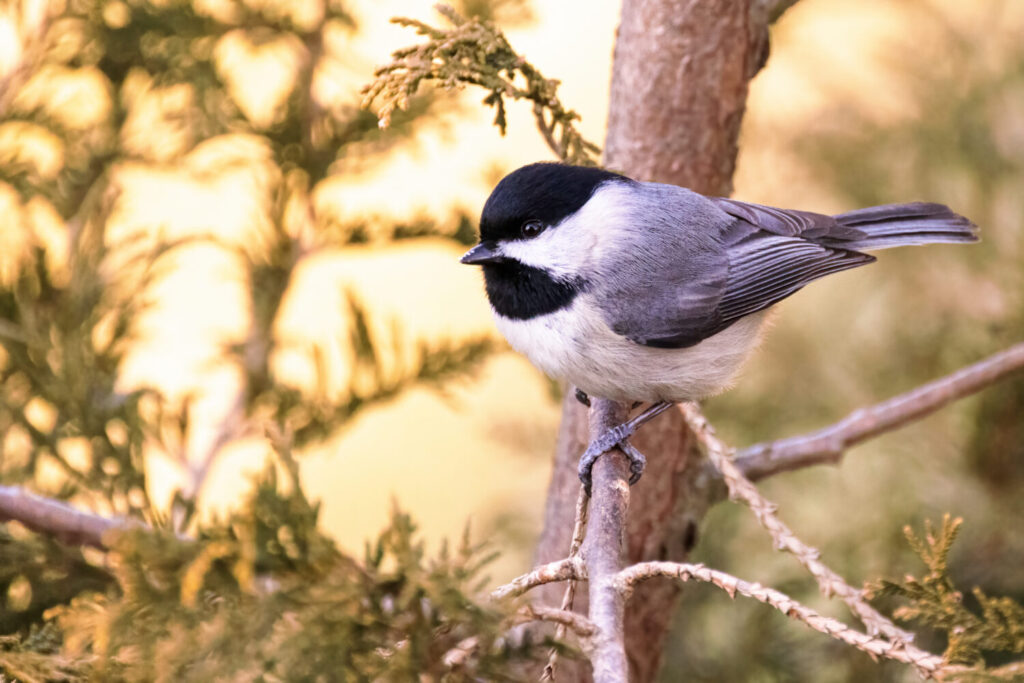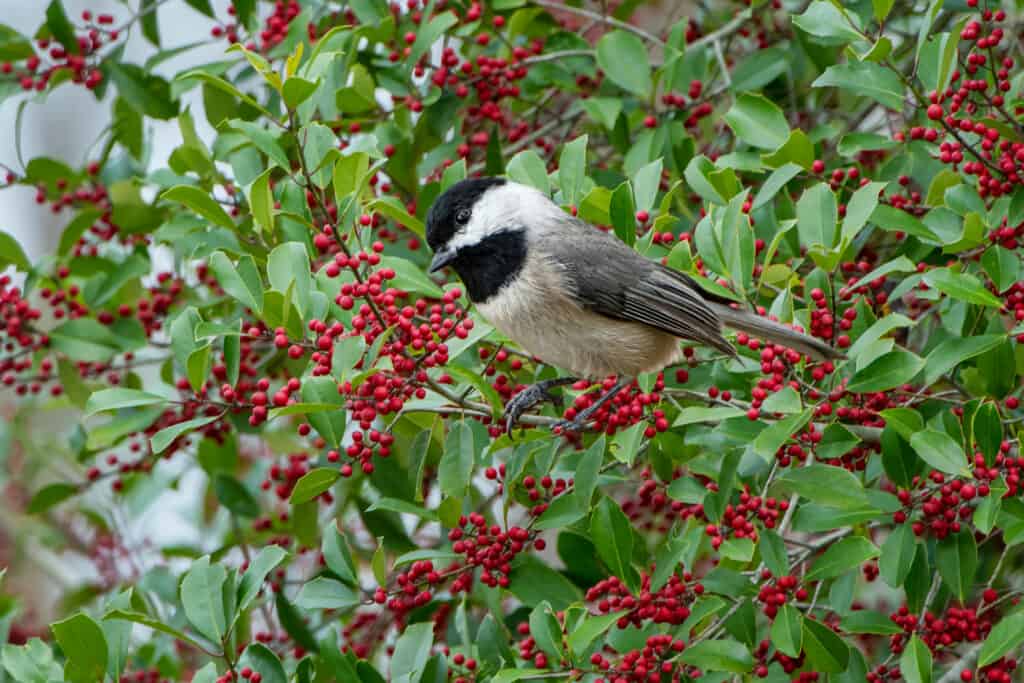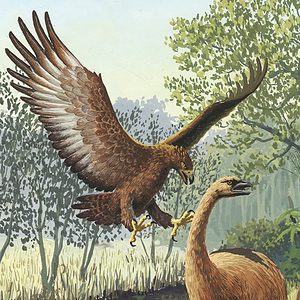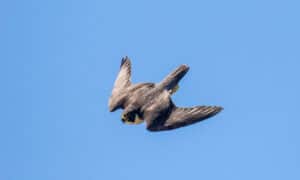The Carolina chickadee, Poecile carolinensis, is one of seven chickadee species native to North America. This adorable bird is a frequent guest at many backyard feeders in the southeastern United States. Birdwatchers may spot these little songbirds traveling around in flocks through the fall and winter. Pairs mate in the spring, nesting in tree cavities or nest boxes. Look for their familiar black and white heads and little gray bodies as they forage on trees in the spring and summer or at feeders in the winter. They might just become one of your favorite birds.
Where to Find the Carolina Chickadee
The Carolina chickadee is a resident species throughout its range, which includes most of the southeastern United States. Its range extends from Texas, Oklahoma, and southeastern Kansas up to Pennsylvania and east to Florida. The northern edge of the Carolina chickadee’s range overlaps with that of the black-capped chickadee. The two species sometimes hybridize along their shared ranges.
Carolina chickadees adapt well to living in a wide variety of habitats. They make themselves equally at home in forests and swamps as they do in urban areas. These birds often live in woodlands or forest edges comprised at least partly of deciduous trees. They tend to prefer to be near a water source of some kind. In urban or suburban areas they may frequent backyards or parks, especially near wooded areas.
Appearance

Carolina chickadees have very rounded bodies with a distinct color pattern.
©Ami Parikh/Shutterstock.com
What do Carolina chickadees look like? These little gray songbirds with black and white heads are cute! They have tiny, round bodies which only reach about 4.3 to 5.1 inches in length, and they weigh less than half an ounce. That makes them around the same size as a house wren and smaller than most sparrows.
Carolina chickadees do not exhibit sexual dimorphism. They have round heads with black caps, black bibs, and tiny black bills. These birds have a wide white stripe that extends across the side of their face, from below the eye to the nape of the neck, where it begins to turn slightly gray. They have dark gray feathers on the upper parts with light, almost white breasts, and buff shanks. Their secondary wing feathers have gray edging, as opposed to the white edging found on the black-capped chickadee.
Reproduction
Carolina chickadees often mate for life. They form pairs in the fall or winter and stick together with a flock of chickadees until they get ready to mate in the spring. The breeding season typically begins in mid-April, when the pair begins searching for a place to nest.
This species, like other chickadees, nests in cavities. They may use natural cavities in trees, abandoned woodpecker holes, or nest boxes. They prefer to nest between 5 to 15 feet above the ground. Males help to excavate the nest site, if necessary, then females build the nest inside the cavity using strips of bark, moss, and other plant materials. They line the nest with softer materials such as plant fibers and animal hair.
Once the nest is complete, females lay anywhere from 3 to 10 eggs. They incubate the eggs alone, sleeping in the cavity. Males may bring the females food during the incubation period. After about 12 to 15 days, the chicks hatch. They emerge without feathers and are helpless, but with both parents feeding them, they develop rapidly. The chicks fledge within 16 to 19 days. They stay close to the nest, though, for another 2 to 3 weeks, while the parents continue to watch over them.
What Do Carolina Chickadees Eat?

The Carolina chickadee eats more berries and seeds in the winter months.
©Bonnie Taylor Barry/Shutterstock.com
Carolina chickadees eat mostly insects and larvae, as well as spiders and other invertebrates. They catch their prey primarily by foraging from the surface of trees, often hanging upside down to get at the underside of a branch or a piece of bark. These birds especially love gobbling up caterpillars. They also sometimes catch prey while hovering or in pursuit of an insect in flight.
In the winter, these hardy birds often switch to a more plant-based diet, eating seeds and berries as they become available. Carolina chickadees may visit bird feeders at any time of year, but particularly in colder months. Like other chickadees, they love sunflower seeds. They also enjoy peanuts, peanut butter, and suet, which provide needed protein and fat.
Are Carolina Chickadees Rare?
The IUCN Red List of Threatened Species has categorized the Carolina chickadee as a species of Least Concern, with a stable population. This species has a large and unfragmented range. It has adapted well to many types of habitats within that range and tolerates human populations easily. This bird is not considered rare, but if you want to increase your chances of attracting Carolina chickadees to your yard, researchers suggest planting plenty of native plants to draw the caterpillars and insects they need.
Female Carolina chickadees build their nests in natural holes in trees or sometimes in holes abandoned by woodpeckers. They form the nests from moss and bark, and then line the nest with animal hair, fur, or soft plant fibers.
The photo featured at the top of this post is © Ami Parikh/Shutterstock.com
Thank you for reading! Have some feedback for us? Contact the AZ Animals editorial team.






